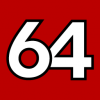-
Posts
12422 -
Joined
-
Last visited
-
Days Won
552
Content Type
Profiles
Forums
Events
Everything posted by Fiery
-
AIDA64 licenses are time-limited and not version limited. Hence your AIDA64 license entitles you to upgrade to any new AIDA64 releases until June 18, 2012, including the today release of AIDA64 v1.85 of course. Once that date (June 18, 2012) comes, you will still be able to use the last version you are entitled to upgrade to, for an unlimited time. By extending your maintenance period (in June 2012 or later) you can continue upgrading to new AIDA64 releases for 1 or 2 or 3 more years. Regards, Fiery
-
Thank you for the feedback
-

"New" LCD features break old configured pages
Fiery replied to INSTG8R's topic in General Discussion
In AIDA64 v1.85 we've applied the advanced configuration options of the previously announced SensorPanel feature, and its new approach of "per-pixel" level adjustments to the LCD feature as well. We've implemented an automatic migration to move the old LCD settings into the new LCD module, but since the new LCD solution is a completely different approach in many ways, the automatic migration is not 100% bullet-proof. So after upgrading to AIDA64 v1.85, you'll need to re-adjust your LCD items in order to attain the previous looks of your LCD display with AIDA64. I'm sorry for the inconvenience the revamped LCD module caused for you, but we had to do that revamp to provide such features that we introduced with the SensorPanel, e.g. configurable colour bars. Once you learn how you can precisely adjust each LCD item with the new AIDA64, you'll see that you can do a lot more with the new LCD than with the old one. In case you still want to stick to the old LCD module, please let us know, since we're currently gathering users feedbacks about this migration. If we get a number of statements about prefering the old LCD configuration over the new one, we may tweak the new LCD module to provide the old "simple LCD item" configuration as well. And so you could have a sort of "best of both worlds": a simple item that you can configure at ease, and an advanced LCD item configuration if you want to step further. Regards, Fiery -
We've fixed the sensor readings for P8H67 in the AIDA64 v1.85 stable release that we've just rolled out: http://www.aida64.com/downloads After upgrading to this new version, make sure to restart Windows to finalize the upgrade. Let me know how it works. Thanks, Fiery
-

Incorrect values of voltage (Gigabyte GA-P65A-UD3)
Fiery replied to Artem's topic in Hardware monitoring
We've fixed the sensor readings for your motherboard in the AIDA64 v1.85 stable release that we've just rolled out: http://www.aida64.com/downloads After upgrading to this new version, make sure to restart Windows to finalize the upgrade. Let me know how it works. Thanks, Fiery -

Wrong temperatures with NCT6776F sensor (Asus P8H61-M)
Fiery replied to ktulm's topic in Bug reports
We've fixed that issue in the AIDA64 v1.85 stable release that we've just rolled out: http://www.aida64.com/downloads After upgrading to this new version, make sure to restart Windows to finalize the upgrade. Let me know how it works. Thanks, Fiery -
We've fixed that issue in the AIDA64 v1.85 stable release that we've just rolled out: http://www.aida64.com/downloads After upgrading to this new version, make sure to restart Windows to finalize the upgrade. Let me know how it works. Thanks, Fiery
-
The new AIDA64 release revamps the Logitech LCD module to support multiple LCD devices with enhanced configuration options, and adds preliminary AMD “Trinity†CPU optimizations as well as OpenGL 4.2 graphics device support. New features & improvements - Advanced multi-device Logitech LCD support - Preliminary support for AMD Trinity processors - Improved support for Socket FM1 motherboards - Temperature, fan speed, voltage correction - GPU details for nVIDIA GeForce 510, GeForce GTX 580M - OpenGL 4.2 support [ Press Release ] [ What's new in AIDA64 v1.85 ] [ Download ]
-
The AIDA64 LCD feature only works with a LCD-equipped Logitech gaming device: G13, G15, G19.
-
Do you have a Logitech G13, G15 or G19 gaming device with a built-in LCD screen? If so, then do you have the necessary Logitech drivers installed? Regards, Fiery
-
Here you go: http://www.aida64.com/product/aida64-extreme-edition/features SQL database support and reporting to CSV and XML files are only supported by AIDA64 Business Edition. Regards, Fiery
-
FYI, in the latest AIDA64 beta releases we've completely revamped the Logitech LCD support, so you have to recalibrate all items, especially their placement. We've basically applied the same improvements that we introduced as the SensorPanel feature on the Logitech LCD feature. It enables you to display bars and to use a more precise items placement -- but on the other hand it requires a bit more efforts to recalibrate your old settings.
-
1) If you would like to stress your system to reveal a potential hardware flaw or instability, then enable all tests in the System Stability Test window, and press Start. Let it run for a few hours. If it doesn't display any error messages, Windows also runs fine, and your computer doesn't reboot, doesn't lockup and doesn't shut down, then your computer is considered very stable. 2) If you rather want to stress your system from a thermal point of view, to reveal potential cooling issues, then only enable the FPU test in the System Stability Test window, and press Start. Let it run for a few hours. Watch the temperature graphs, where the motherboard temperature should stay below 55-60 Celsius, and your CPU temperature should stay below 80 Celsius. In case you have an Intel processor, then should also watch the bottom graph where the Throttling activity should stay at 0% all the time. If the Throttling graph shows any non-zero activity, it means your processor is overheating. In case your computer restarts, shuts down, locks up or throws a BSoD while running the thermal stress test, then your computer is overheating. Regards, Fiery
-
Please right-click on the bottom status bar of AIDA64 main window --> Sensor Debug --> ISA Sensor Dump. Copy-paste the full results into this topic. Make sure to use the latest beta of Build 1498. Thanks, Fiery
-
Thank you for the feedback
-
Have you tried to lower the LCD update frequency to 1 second? (AIDA64 / main menu / File / Preferences / Hardware Monitoring / Update Frequency)
-
Please upgrade to the latest beta version of AIDA64 Extreme Edition available at: http://www.aida64.com/downloads/aida64extremebuild1498pxwc5m0ygbzip After upgrading to this new version, make sure to restart Windows to finalize the upgrade. Let me know if it helps. Thanks, Fiery
-

Using PC during AIDA 64 stability test?
Fiery replied to psyside1's topic in Benchmarking, system performance
We generally recommend not to use any other software or process while running the AIDA64 System Stability Test, since it may mean AIDA64 cannot stress all cores equally hard at all times. So we can only guarantee the maximum reliablilty of our test if you don't use your computer for other purposes. If you can't afford to not use your computer for several hours during the day, then you can also let it run by night while you're away from your computer. 2GB RAM is more than enough for our test to run properly. Regards, Fiery -
Do you mean you have a secondary or tertiary monitor, e.g. a LCD TV connected via DVI or HDMI that you sometimes disconnect from your computer? If that's the case, then please let us know more about your system configuration. What video card do you have? Do you have your Windows Desktop extended to join all displays to a single wide desktop? Thanks, Fiery
-
Do you mean a new column in the Remote Monitor window of AIDA64 Business Edition to show not the current network traffic, but the average traffic since the Remote Monitor window was opened? Thanks, Fiery
-
Do you mean CPU-Z is right and AIDA64 shows the wrong BCLK (FSB) and DRAM clock?
-
A small bug has slipped into the OpenGL 4.1 and 4.2 compliancy test of AIDA64. We'll fix it in the next beta release. Have a great weekend
-
Can you please try it with the latest AIDA64 beta release? http://www.aida64.com/downloads/aida64extremebuild1498pxwc5m0ygbzip After upgrading to this new version, make sure to restart Windows to finalize the upgrade. BTW, what video card do you have? Do you have Windows 7 64-bit installed? Thanks, Fiery
-
Usually a report submit is only necessary once or twice on a computer, so that's why AIDA64 doesn't remember your name and email address. You can however set those bits in AIDA64 / main menu / File / Preferences / Report. As for the connection issue, I suppose it's due to a firewall. If you have a software firewall on your computer, then make sure to let AIDA64 through it. If you have a company firewall, then you may not be able to use AIDA64 report submit function. BTW, the report submit facility uses HTTP protocol to submit reports directly to our web server. Regards, Fiery
-

Remote monitoring and remote control
Fiery replied to tmnetwork's topic in Network audit, change tracking, SQL databases
Yes, you need to have AIDA64 running on all your computers that you want to monitor or control remotely. Regards, Fiery


